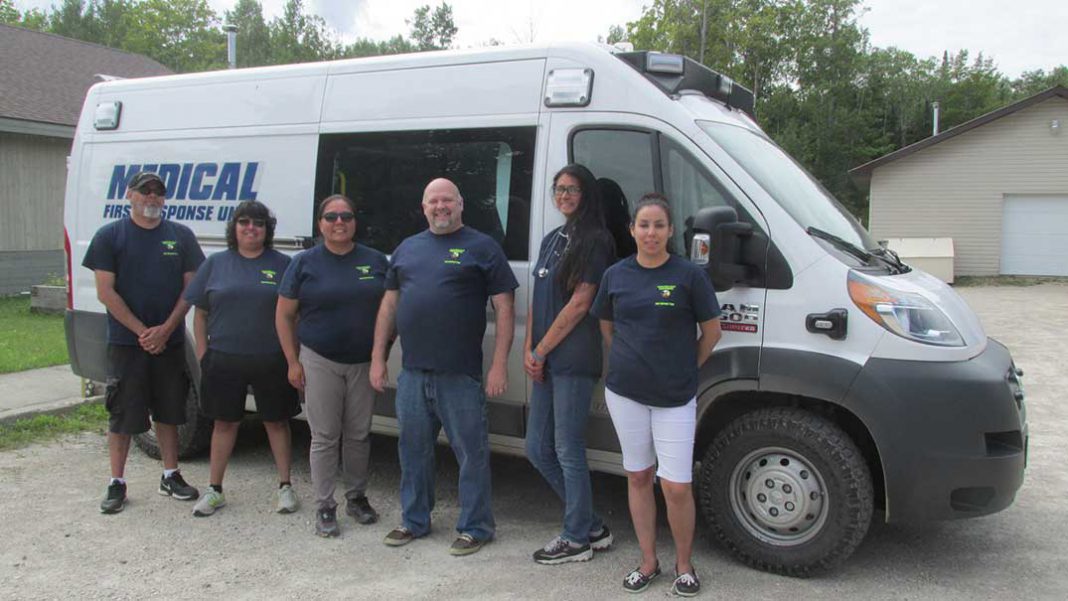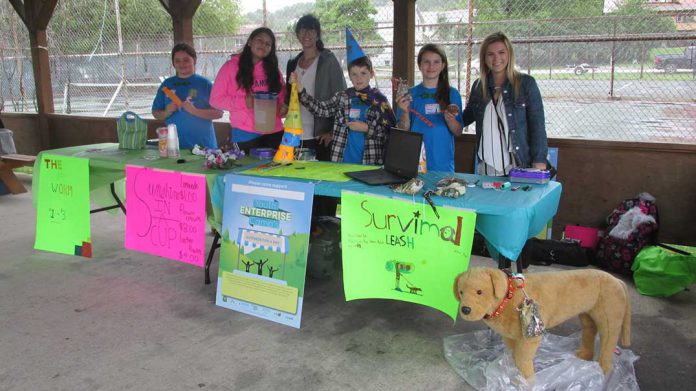SHESHEGWANING FIRST NATION—The Sheshegwaning First Nation First Response Team has received a new ambulance for its first response team through the province of Ontario.
“This vehicle was purchased by the Ministry of Health in keeping with the Ontario First Nation Health Action Plan and donated to the community of Sheshegwaning First Nation in support of their medical first response team,” stated Stuart Mooney, senior field manager with the Emergency Health Program Delivery and Management Branch of the Ministry of Health and Long Term Care (MOHLTC).
“The development and maintenance of an emergency first response team within Northern First Nations communities is a continuation of the Ministry of Health effort to put people and patients first,” said Mr. Mooney. “The ministry is committed to building medical capacity in the community and increasing access to emergency care.”
Ed Landriault, regional training coordinator with the MOHLTC Emergency Health Services Branch, told the Recorder, “this is a brand new vehicle. It had just 65 kilometres on it when it left Sudbury and now its owned by the community.” He pointed out the program pays for additional costs of the vehicle like insurance and maintenance. “But, the most important thing is having this vehicle on hand so the first response team can provide this most important first response emergency service.”
Mr. Landriault pointed out that among the many features of this new vehicle, “there is a much larger patient compartment in the back than the old vehicle. You could stand a person who is six-foot-two-inches tall in the vehicle and they would not reach the roof.”
“It was about 11 years ago that we started to talk to the community about having a first response team, something that representatives of the community had first brought up,” said Mr. Landriault. “I came over in 2008 and we started the training etc. so the service has been in place for about nine years now.”
It was pointed out that the late Toby Hardwick had led the cause for the community in having a first response team established.
Nicole Bush, a member of the first response team said, “Ed and the ministry have always been supportive of this program and the community. He was the training leader when Toby passed away the first year we established the team. The community was shell shocked by Toby’s passing and it was Ed who came forward and provided support and training.”
Ms. Bush noted, “if the pager goes off we respond to calls immediately.”
“We got recognized for providing the service and receive thanks for responding,” said team captain Melinda Sampson.
Nick Bush pointed out just the evening before, “our team was out on a call last night, for a gentleman in Silver Water who was having respiratory problem. We responded and he was very surprised and appreciate that we got there in just five minutes.”
Under the provincial Regional Training Program First Nations Emergency Medical Training, the program mission is, “to deliver emergency training to First Nation people in accordance to the basic life support standards, while respecting the traditional cultures and values of the First Nations.”
The North Regional Training Program provides, trains and equips volunteers within First Nations communities to respond to medical emergencies. The communities served are far north, underserviced First Nations that have extended response times from the area medical hospitals.
The Emergency First Response Teams (EFRT) are located in underserviced First Nations communities. These teams stabilize the patient while awaiting arrival of the land ambulance or ORNGE air ambulance.
The emergency response teams are comprised of community volunteers that respond within the scope of their training.
The First Response Teams arrive at the patient’s side in minutes, to provide CPR and the use of an AED which has the potential to save lives.





